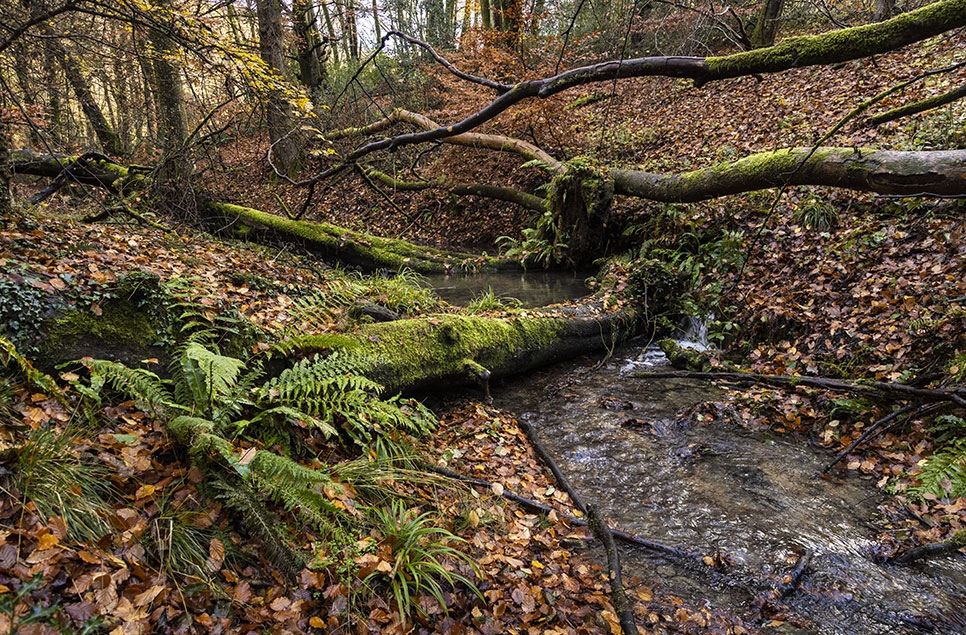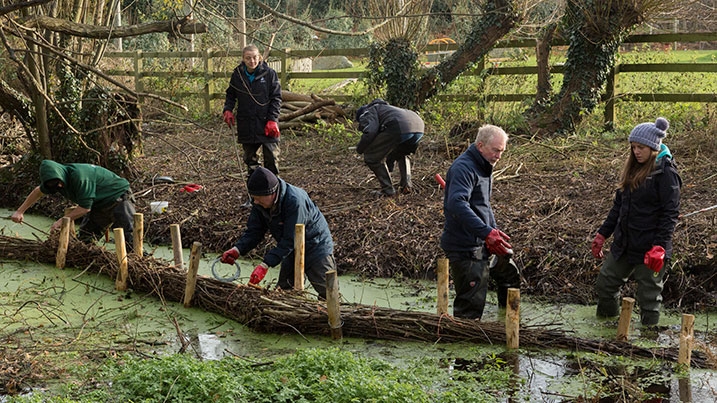Flood Resilient Communities: WWT’s Expanding Role
Around 5.5 million homes and businesses are vulnerable to flooding in England. Natural flood management uses natural features in the landscape like ponds, floodplains and wet woodlands to help prevent flooding.

Some of the measures are designed to slow down and stop rain water accumulating and flowing across the surface. Others act upstream to slow the water flow and reduce the peak surge from rainfall. See our explainer for more detail.
In June 2022, the Environment Agency launched their new Flood & Coastal Erosion Risk Management (FCERM) Strategy Roadmap. This document explains how, over the next four years, the Environment Agency, in partnership with other organisations including WWT, will put in place measures to ensure that communities in England are “ready for, and resilient to, flooding and coastal change – today, tomorrow and to the year 2100.” WWT is the only conservation charity directly represented within this partnership, working alongside our friends at Wildlife & Countryside Link. We have three areas of work that we’re responsible for in order to help deliver the Roadmap. These are to:
- Investigate the links between natural flood management (NFM) and climate change resilience
- Report on the links between community engagement and levels of NFM scheme success
- Look at how NFM drives other benefits of wetland creation such as those for biodiversity
In reporting on these three areas, we will apply the learning from our delivery work in the Two Valleys NFM project and the Thames Catchment NFM Advice project as well as the work of WWT’s research department. We will also be reaching out to our partners across various sectors to bring a wide range of knowledge and experiences together.
Over the next few years, we will keep you up to date with this work through this blog.
We are hopeful that our involvement in this key UK Government project will allow us to make new connections. We’ll use these to expand our range of work to integrate wetland solutions into schemes to prevent flooding and coastal erosion and the impacts of increasing climate change.
NFM and climate change
The first action we are reporting on for the FCERM Strategy Roadmap focuses on the work we do to investigate ways of adapting to and mitigating climate change, and how this relates to our NFM work. For example, we are looking at how some of the NFM measures we work on might help to send water back underground, to feed river systems. This will make them more able to deal with longer periods without rainfall, something we are expecting to happen more frequently due to climate change.
We will also be reporting on a new initiative in the streams around Stroud where we are proposing an ‘Open Laboratory’. This means that anyone (such an universities or other research institutes) can propose to come and do research around the NFM work we are carrying out here in exchange for sharing their data with anyone else who wants to. A win-win for increasing our knowledge of how NFM works and the benefits that come from it.
We are also interested in how wetlands created for NFM can help to recover insect populations, and the wider food webs that rely on them, as we expect longer, drier summers to impact on these ecosystems.

NFM and communities
The second area of work we will be working on relates to measuring how involving communities in NFM projects might increase their success. We have long known that community buy-in can be essential to the effectiveness of any conservation project, and NFM schemes are no different. This can be seen from the research undertaken during the development of WWT Steart Marshes which was subsequently published as a chapter in the journal Coastal Wetlands Restoration.
Our NFM projects in Richmond and Slough, being delivered through the Defra-funded Flood and Coastal Resilience Innovation Fund, are good examples of encouraging communities to help co-design the NFM schemes to help make their neighbourhoods more resilient to flooding. This work is being backed up by a PhD study undertaken by postgraduate student Sam Watkins.
The work we do in this area will also be influenced by the recently concluded Government-funded NFM pilot projects (including one in the Two Valleys area in West Somerset delivered by WWT). The final report for these projects presented some interesting findings in terms of the work needed to engage communities, with a key recommendation that in some cases this should be started as much as 2 years before project delivery.

NFM supporting other drivers for wetland creation
The last area we will be working on relates to the wetland creation work we do that helps prevent flooding but doesn’t have this as its main focus. For instance we may create a wetland where the main aim is to increase biodiversity or store carbon, but it still also provides flood protection. Specifically we want to understand more how wetland schemes primarily created for other benefits can be recognised by governmental and other funders.
For example, the creation of WWT Steart Marshes was driven by a need to provide compensatory habitat to replace that being lost elsewhere on the same coastline. However, the scheme has also provided protection from flooding for the community living in this landscape, so we want to see this recognised in the development of similar future projects.



